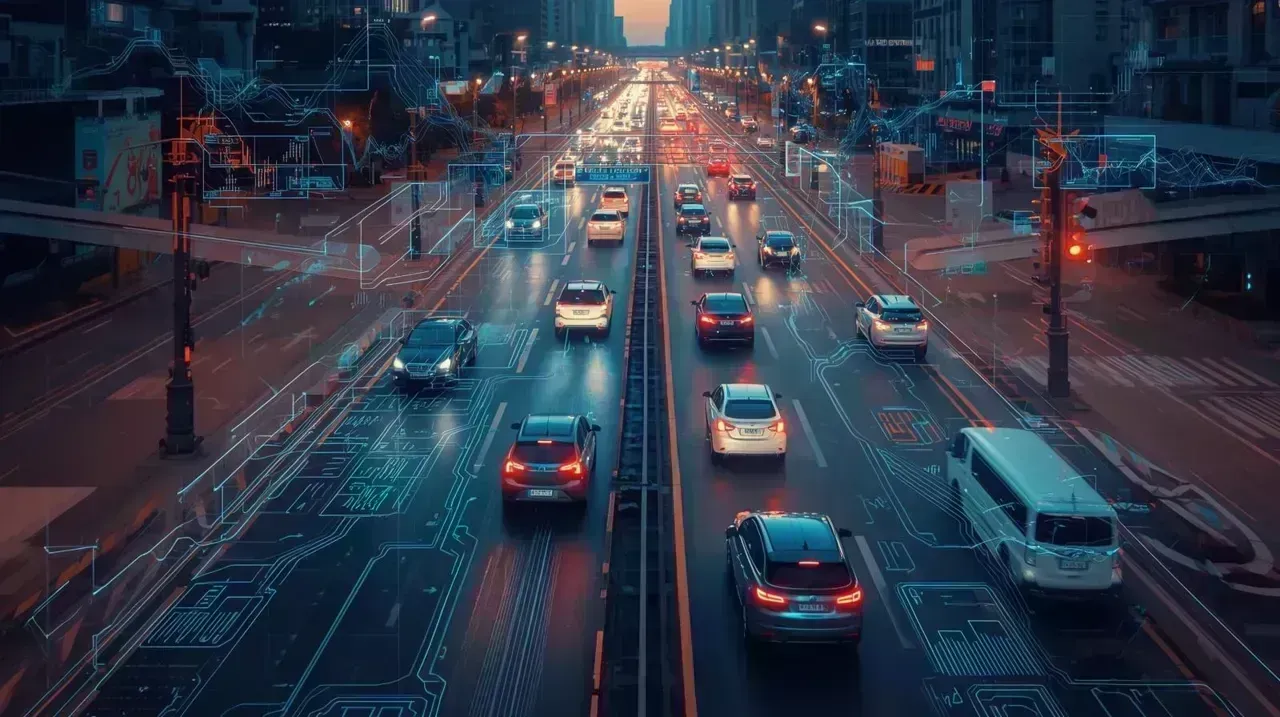
Post by : Meena Rani
Traffic congestion is a daily frustration for millions around the globe. Whether you're stuck on the highway during rush hour or navigating crowded city streets, the inefficiencies of traditional traffic systems cost time, money, and even lives. According to the INRIX Global Traffic Scorecard, urban congestion costs drivers billions of dollars annually in lost productivity, wasted fuel, and environmental harm.
Fortunately, the intersection of artificial intelligence (AI) and big data is offering powerful solutions to this age-old problem. By using real-time analytics, machine learning, and predictive algorithms, cities are now implementing smarter, more adaptive traffic management systems. In this article, we’ll explore how AI and big data are revolutionizing the way the world approaches traffic—and what it means for the future of transportation.
Traffic congestion affects more than just our daily commutes. The economic, environmental, and social impacts are massive:
Big data in traffic management refers to collecting, storing, and analyzing vast volumes of structured and unstructured data from diverse sources:
AI algorithms can forecast traffic patterns by analyzing past and real-time data. This predictive ability allows:
Smart signals powered by AI adjust based on current traffic conditions, unlike traditional timers. They can:
Example: In Pittsburgh, an AI system called Surtrac reduced travel times by 25% and emissions by 20%.
AI models trained on video and sensor data can detect accidents or stalled vehicles in real time and dispatch assistance or reroute traffic quickly.
AI enhances mapping and navigation apps by offering personalized, dynamic routing based on:
Singapore has one of the world’s most advanced traffic systems. It uses:
The Land Transport Authority (LTA) is actively integrating AI into its Smart Mobility 2030 strategy.
L.A. has over 4,500 traffic signals connected to a central AI traffic management system. This system can:
Using Baidu’s Apollo Traffic System, Beijing has seen up to a 20% reduction in traffic delays. The system integrates:
Barcelona uses a smart city platform to:
AVs rely on AI to:
By reducing human error, AVs can dramatically improve traffic safety and efficiency.
Companies like Uber and Didi use AI to:
Micromobility providers (e.g., e-scooters and bikes) use big data to plan drop-off/pick-up zones and pricing strategies.
The next generation of traffic management will be powered by 5G networks and IoT sensors:
5G allows for higher volumes of data to be processed faster—essential for autonomous driving and high-density urban traffic control.
Despite its promise, AI-driven traffic systems come with challenges:
Tracking vehicles and smartphones raises concerns about:
Surveillance
Consent
Data misuse
AI systems trained on flawed or incomplete data may:
Misidentify incidents
Favor certain neighborhoods or vehicle types
Upgrading infrastructure and training systems can be prohibitively expensive, especially for smaller cities.
Cities with old infrastructure may struggle to adopt new technology seamlessly.
With connected AVs, smart lights, and cloud-based control systems, traffic may one day be managed without human input.
AI may provide users with personalized congestion forecasts, route suggestions, and even incentive programs to alter travel behavior.
AI will increasingly power:
Bus route optimization
On-demand shuttles
Real-time transit information systems
Traffic jams might not vanish overnight, but with AI and big data, cities can shift from reactive to proactive traffic management. Whether it's through adaptive signals, autonomous vehicles, or real-time routing, the tools of tomorrow are already on today’s roads.
The future of mobility is intelligent, connected, and data-driven. If implemented thoughtfully and equitably, AI and big data have the potential to transform our cities—easing congestion, improving sustainability, and reshaping how we move through the world.
#SmartTraffic #AIinTransportation #BigDataAnalytics #TrafficManagement #SmartCities #UrbanMobility #TrafficSolutions #AutonomousVehicles #SustainableTransport #5GConnectivity #IoTinTraffic #TrafficCongestion #FutureOfTransport #SmartMobility #CleanAir










Advances in Aerospace Technology and Commercial Aviation Recovery
Insights into breakthrough aerospace technologies and commercial aviation’s recovery amid 2025 chall

Defense Modernization and Strategic Spending Trends
Explore key trends in global defense modernization and strategic military spending shaping 2025 secu

Tens of Thousands Protest in Serbia on Anniversary of Deadly Roof Collapse
Tens of thousands in Novi Sad mark a year since a deadly station roof collapse that killed 16, prote

Canada PM Carney Apologizes to Trump Over Controversial Reagan Anti-Tariff Ad
Canadian PM Mark Carney apologized to President Trump over an Ontario anti-tariff ad quoting Reagan,

The ad that stirred a hornets nest, and made Canadian PM Carney say sorry to Trump
Canadian PM Mark Carney apologizes to US President Trump after a tariff-related ad causes diplomatic

Bengaluru-Mumbai Superfast Train Approved After 30-Year Wait
Railways approves new superfast train connecting Bengaluru and Mumbai, ending a 30-year demand, easi